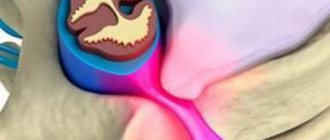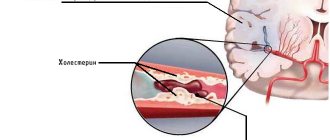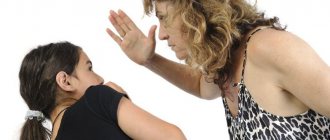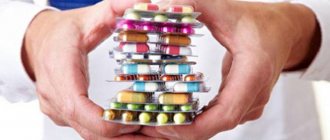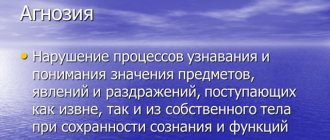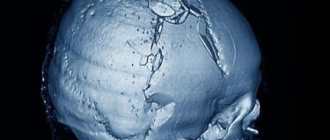Neuroinfection is the general name for various types of infectious diseases that are caused by viruses, bacteria, and fungi. Localization takes place in the central nervous system. This disease, especially in children, requires immediate medical attention. Delay can contribute to the development of various complications. Complications are dangerous because they can be fatal. Neuroinfection, the symptoms of which have been well studied, can be of various types depending on the location:
- Encephalitis is characterized by damage to the brain.
- Meningitis - changes in the dura mater of the brain are observed.
- Myelitis - affects the spinal cord.
- Arachnoiditis – the arachnoid (arachnoid) membrane of the brain is affected.
Most often, neuroinfection of the brain is of a mixed type. As a rule, the peak of a disease such as a viral or bacterial neuroinfection occurs in the warm season. The source of infection is sick people or various carriers of viruses. As a rule, the disease is transmitted by airborne droplets. Acute neuroinfections in children develop due to pathogenic viruses entering the body. The disease is caused by herpes simplex viruses, adenoviruses, enteroviruses, etc. Infection occurs through dirty hands, objects or airborne droplets. The most common are acute viral neuroinfections, which mainly develop in the warm season. Most often children get sick. Treatment of acute neuroinfections should be carried out under the supervision of a physician. Contact our clinic for help in a timely manner. Chronic neuroinfections are one of the most serious health problems. Chronic neuroinfections include brucellosis, neuroAIDS, leprosy or leprosy, neurosyphilis, etc.
Main symptoms
Neuroinfections in children can manifest themselves with various symptoms. Viral neuroinfection is often a consequence of diseases such as influenza, herpes, rabies, and tick-borne encephalitis. The virus enters primarily from the nasopharynx or through the blood. Symptoms of neuroinfection in children of the viral type are as follows:
- There is an increase in temperature to a critical level.
- The child has a severe headache, weakness and photophobia.
- Intoxication of the body occurs (nausea and vomiting).
- Paralysis.
- Visual and auditory hallucinations appear.
Signs of bacterial neuroinfection
Signs of a bacterial neuroinfection include impaired consciousness, fever, vomiting, the appearance of a rash on the skin, lethargy, and a decrease in blood pressure. Signs of fungal-type neuroinfection are difficult to diagnose. The fungus enters through the ears, lungs, nose, mouth, etc. Signs of this type of neuroinfection include the appearance of high temperature and irritability in the child, fever, and intracranial hypertension. If signs of neuroinfection appear, you should immediately consult a doctor. This disease is treated by a neurologist and an infectious disease specialist. The consequences of neuroinfection can be serious. If the disease is not treated promptly, further damage to the central nervous system may occur, and subsequently coma. Our clinic’s specialists take a comprehensive approach to diagnosis and treatment.
Clinic
Symptoms of neuroinfection are usually very pronounced. It is important to immediately go to see a qualified doctor when the first signs appear, as delay can cost the patient’s life.
Any pathology belonging to the group of nephroinfections is accompanied by three syndromes, which are characterized by certain symptoms:
- liquor hypertension syndrome. It is characterized by intense headache, impaired consciousness, mood changes, tachycardia, tachypnea; intoxicating. An increase in body temperature to critical levels, nausea and vomiting, weakness, decreased ability to work, etc.; liquor syndrome.
Common childhood neuroinfections
Currently, there are a large number of varieties of this disease. The most common is meningitis. It can be bacterial or viral in nature. The disease is dangerous. In the absence of proper treatment, the consequences of neuroinfection can be different. The causative agent is meningococcus or pneumococcus. Encephalitis is an inflammatory process in the gray and white matter of the brain. The pathogens are tick-borne encephalitis viruses, staphylococci, streptococci, etc. Myelitis is a severe inflammatory process that affects the spinal cord. Characteristic signs of myelitis are paralysis and paresis, changes in the functioning of signal receptors, and disturbances in the functioning of the central nervous system. In some cases, ailments such as pneumonia, cystitis, etc. may develop against the background of myelitis. A neuroinfection such as neuroAIDS is transmitted from sick to healthy. This disease is characterized by damage to the immune and central nervous systems.
The main routes of infection are important to know!
Neuroinfection can enter the body in several ways. These may be infections that are transmitted by ticks. When a tick bites, the infection enters the body, affecting the peripheral or central nervous system. There are also neuroinfections, the causes of which are varied, transmitted by mosquitoes. Viruses, bacteria and fungi can be transmitted by animals (neurobrucellosis, rabies). The disease often develops against the background of influenza and ARVI. Penetration of the pathogen occurs through mucous membranes. The patient's condition suddenly worsens. Signs of neuroinfection such as paralysis, paresis, various mental disorders, etc. appear. With diseases of the ear, nose and throat, chronic or acute neuroinfections can also develop, the symptoms of which are different. As is known, these organs are located near the human brain. In this regard, the infection can easily penetrate the membranes of the brain and blood vessels. Often, a neuroinfection develops in a person under the influence of the herpes virus. The virus enters the body and spreads in the presence of weak immunity. In addition, there are slow neuroinfections. They are characterized by a slow course and can progress gradually. As a rule, they are caused by various viruses. Often carried by insects and animals.
Sources of neuroinfection
In a newborn, infection occurs through the mother, in the womb, during passage through the birth canal or after it.
The consequences in each period of development are different.
In case of intrauterine infection, it matters what properties the pathogen has, the maturity of the fetus and the assessment of the state of the body’s protective functions. In this case, the chances of a complete recovery are negligible.
As the child grows up, the consequences of the infection can be assessed by analyzing the skills and abilities in accordance with his age.
Features of the course of neuroinfection
Neuroinfection of the brain in children is acute. It can have varying degrees of severity. This feature is associated with the immaturity of the children's immune system. Most often, children who have various congenital diseases and ailments are susceptible to the disease. The consequences of neuroinfection in children can be severe. Therefore, it is not recommended to postpone treatment for a long time. Treatment of neuroinfection in St. Petersburg is carried out at a high level of quality. Remember that the consequences of neuroinfection can be severe and lethal, or as a result of this disease a person can become disabled.
Diagnostic features
Treatment of neuroinfection of the brain begins with proper diagnosis. First of all, a neurological and somatic examination and an MRI of the brain
. This is necessary to determine the presence of inflammatory edema. Characteristic manifestations of the disease can develop over several days. Patients with neuroinfection require a special individual approach to diagnosing the cardiovascular system. All parameters of segments of the cardiovascular system are examined. If necessary, measures such as capillaroscopy are carried out.
How is neuroinfection treated?
How to treat neuroinfection? This question worries those who are faced with this disease. You should not self-medicate. Seek medical help promptly, as the consequences of neuroinfection can be severe. Treatment of neuroinfection is prescribed based on the type and severity of the disease. For viral diseases, antiviral and immunomodulatory therapy is prescribed. If the condition is critical, then fever-reducing drugs and vasoconstrictors come to the rescue. A viral neuroinfection should be treated, like a bacterial one, under the supervision of doctors. Bacterial neuroinfection is treated with antibacterial therapy. Antibiotics are selected based on the examination performed. Fungal infections are the most difficult to treat. For fungal infections, drugs such as Amphotericin B and fluconazole are often used. When prescribing drugs, the patient's age and blood pressure level are taken into account. Treatment of neuroinfection is carried out using an individual approach. Remember that treatment of the consequences of neuroinfections may take a long period of time. In this regard, seek medical help promptly. If you feel unwell, be sure to call emergency medical help. Delay may lead to complications arising.
Therapeutic measures
The consequences of neuroinfection can be extremely unfavorable if it is not detected and treated in a timely manner. Treatment of neuroinfection directly depends on which pathogen is identified during diagnosis. In case of bacterial infection, antibiotics are used. For viral neuroinfection, antiviral therapy is indicated, in particular interferon is prescribed. In addition, symptomatic treatment is carried out - diuretics, nootropics, neuroprotectors, vascular drugs, etc. are prescribed.
If a person has suffered a neuroinfection, then he may experience some changes in behavior, frequent mood changes, decreased mental activity, memory, etc.
Treatment of neuroinfection in our clinic
Our clinic provides treatment for neuroinfections at a high level of quality. As is known, chronic or acute neuroinfections occur due to damage to the brain or spinal cord. The peripheral parts of the nervous system may also be affected. brain. Damage to the nervous system can occur due to the influence of a wide variety of viruses or bacteria. Normally, the nervous system has excellent protection from the effects of adverse factors. Pathogenic microorganisms, as a rule, affect the body with a weakened immune system. Neuroinfection, the consequences of which are varied, is diagnosed and treated in our clinic using modern methods. Therapy is used to increase anti-infective immunity. Specialists with extensive experience achieve sustainable results and use complex treatment methods. The main objectives of treatment are to eliminate the pathogen (virus, bacteria, fungus), block the path through which the microorganism entered, and restore the body’s immune defense. All treatment is based on examination data. At the first stage, an examination by a neurologist is carried out. Reflexes and coordination of movements are tested. This is necessary to distinguish neuroinfection from other diseases with similar symptoms. Next, a search for the pathogen is carried out. Thanks to high-quality laboratory work, the pathogen is found and the functioning of the immune system is assessed. The doctor is searching for the route of infection. A thorough diagnosis of the immune system is also carried out. Electroneuromyography makes it possible to find out whether there is damage to the spinal cord and peripheral parts of the nervous system. MRI helps to identify existing foci of the inflammatory process. We recommend that when the first symptoms of a neuroinfection appear, you immediately seek medical help. This will help avoid negative consequences. Please note that all types of acute neuroinfections are treated in a hospital. In our clinic, doctors can only suspect their presence and refer them to the emergency hospital. At an outpatient appointment, chronic, sluggish types of neuroinfection or their consequences are more often identified, and restorative treatment is carried out.
Diagnosis and treatment
If psychoneurological disorders are detected in a child, it is important to immediately proceed to their diagnosis with subsequent correction.
The main diagnostic method is MRI, which can be used to see structural damage to the brain. Other hardware methods: EchoEG and EEG. The detected bioelectrical activity of the brain allows us to determine the local location of the pathology.
After assessing the volume and degree of damage to all higher mental functions, the neurologist gives a referral to a speech therapist and neuropsychologist. They are engaged in child rehabilitation and restorative education.
In combination with such therapy, the doctor may prescribe restorative measures: osteopathy, therapeutic massage, reflexology and transcranial magnetic stimulation.
